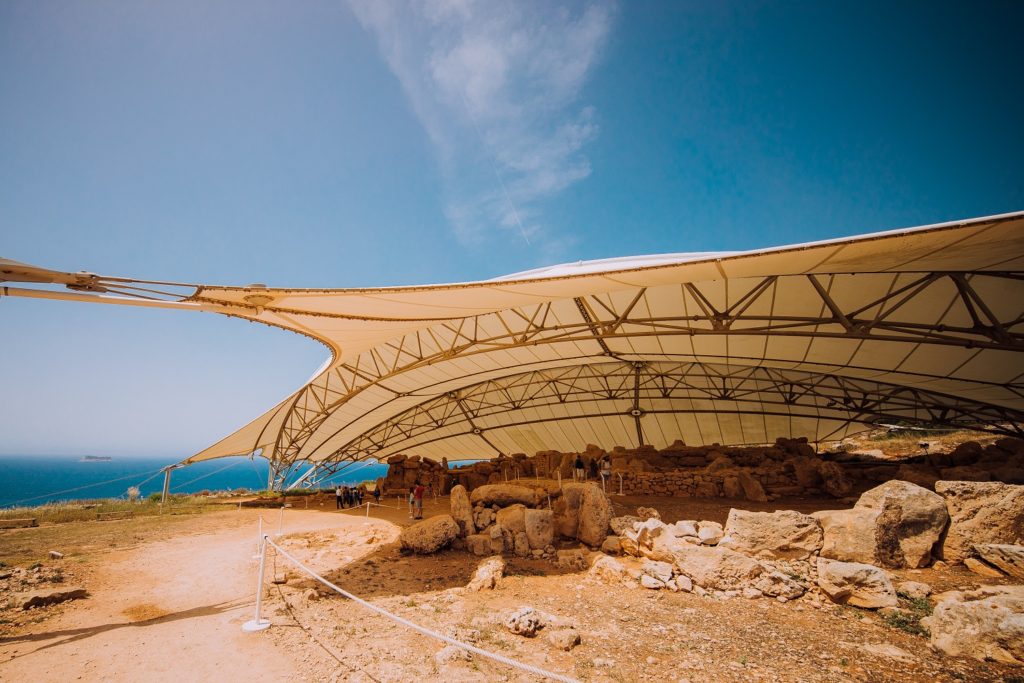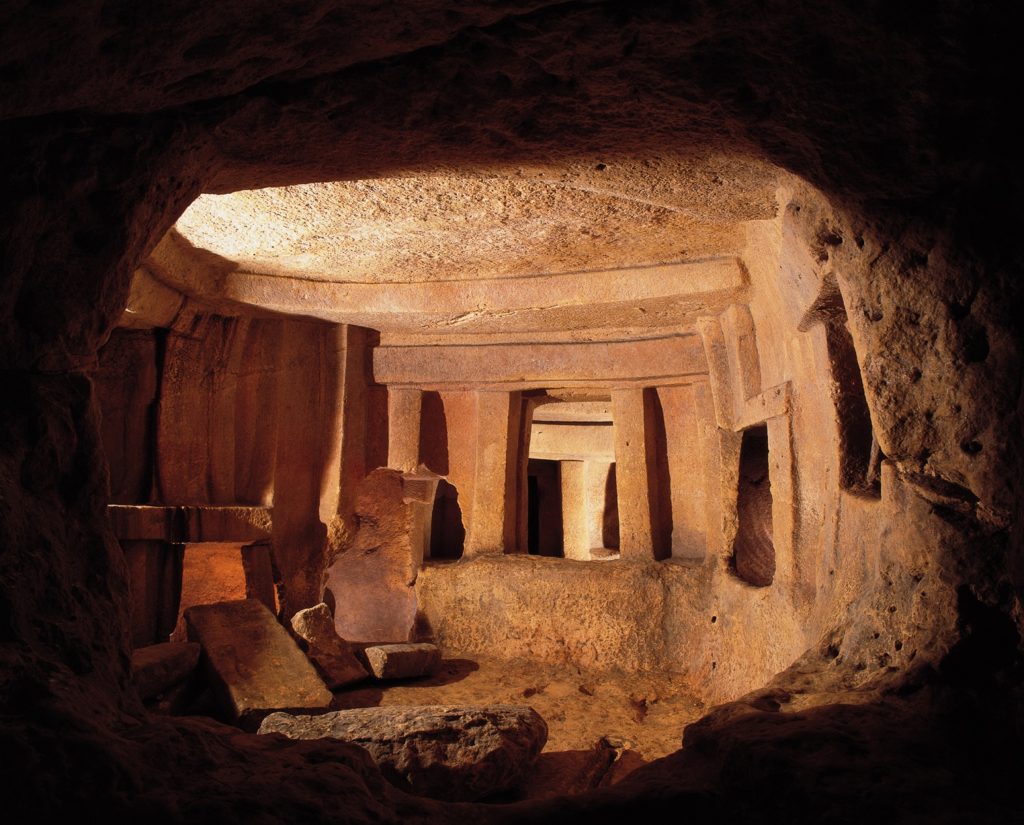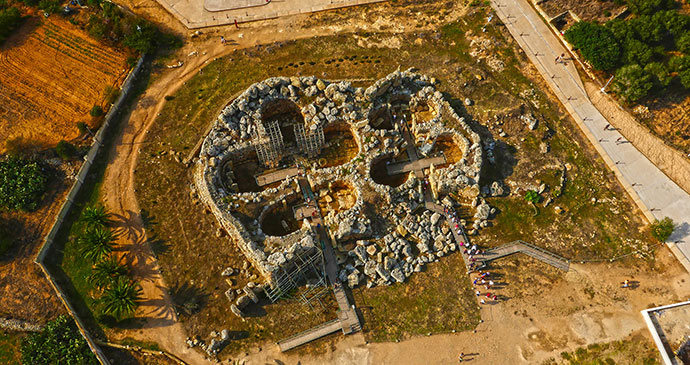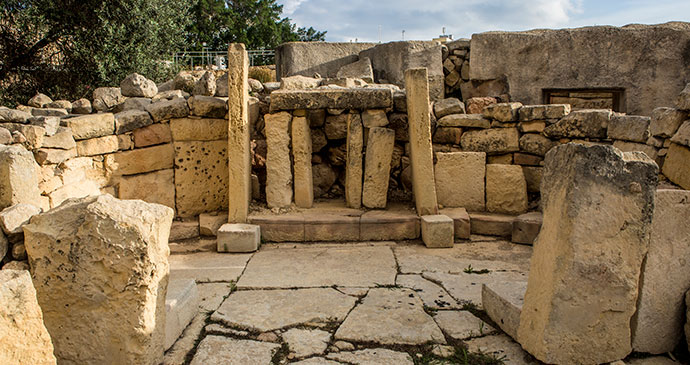Malta’s temples are unique. They are some of the oldest stone buildings in the world and by far the most sophisticated for their time (the 4th and 3rd millennium BC). But despite having UNESCO World Heritage status, the sites were for many years not highly valued in Malta and there was little or no visitor information.
This is now beginning to change. With help from EU funding, there are now visitor centres at two temple sites: Mnajdra and Ħaġar Qim and Ġgantija. The one at Ġgantija has a particularly good exhibition and museum. Mnajdra and Ħaġar Qim are also now protected by vast canopies keeping off the sun and rain that previously damaged the stone.
Here is my pick of the best temples in Malta and Gozo. For more information, you can also see my guide to Malta and Gozo.
Mnajdra and Ħaġar Qim
Mnajdra and Ħaġar Qim are the most atmospheric of Malta’s temples to visit. They sit in an idyllic location well away from Malta’s urban sprawl, surrounded by blue sea, grey rock and, in spring, greenery and flowers.

The view from a distance is now disturbed by two vast cream-coloured canopies that have been built to protect the temples from sun and rain. There can be no doubt that these are necessary, and in some ways they enhance the visitor experience.
The National Archaeological Museum in Valletta Neolithic Galleries
The Archaeological Museum is a must for anyone remotely interested in Malta’s prehistoric temples as this is where all the most important finds from the temples reside – including the iconic ‘Sleeping Lady’.
Even before you pay to go in, there are two monumental upright panels with polished surfaces decorated with pitting and spirals that certainly do not look five millennia old. There is plenty more inside, as well as galleries devoted to the Maltese Bronze Age and Phoenician periods.
Ġgantija Temples
Ġgantija (pronounced Jiganteeya, meaning ‘gigantic’ or ‘of the giants’) is one of the oldest of Malta’s extraordinary temple sites, giving its name to the first phase of temple building (3600–3200BC). First excavated in 1827, two temples stand next to each other surrounded by one massive boundary wall. They also share a broad forecourt with panoramic views.
As you stand with your back to the temples you have Xewkija and its Rotunda on your right, Nadur to the left and in between, Nuffara Hill, which was settled in the Bronze Age. The rural area around Ġgantija, Ta’ Hamet, is one of the most fertile in Gozo. The farming people who built Ġgantija did not choose this spot for nothing.
Ħal Saflieni Hypogeum
An unobtrusive doorway in a suburban street is the unlikely entrance to this extraordinary prehistoric site – a complex underground burial chamber, a temple of the dead that echoes the architecture of the above-ground temples.

Built on three levels (Upper 3600–3300BC, Middle 3300–3000BC, Lower 3150–2500BC), the hypogeum probably served the same community as the Tarxien Temples – and perhaps also the nearby Kordin Temples. Protected from weather and human interference, the hypogeum offers a unique insight into the art and culture of the temple people.
Tarxien Temples
This is the most complex of Malta’s temples, and was the most decorated. Tarxien is the source of many of the outstanding carved reliefs and statues now in the National Museum of Archaeology in Valletta (see above), represented on site by copies.
The Tarxien site is not picturesque, walled around as it is with an unattractive modern suburb, but it is of huge archaeological importance and there is plenty to see here.
More information
For more information, see Juliet Rix’s guide to Malta and Gozo:

